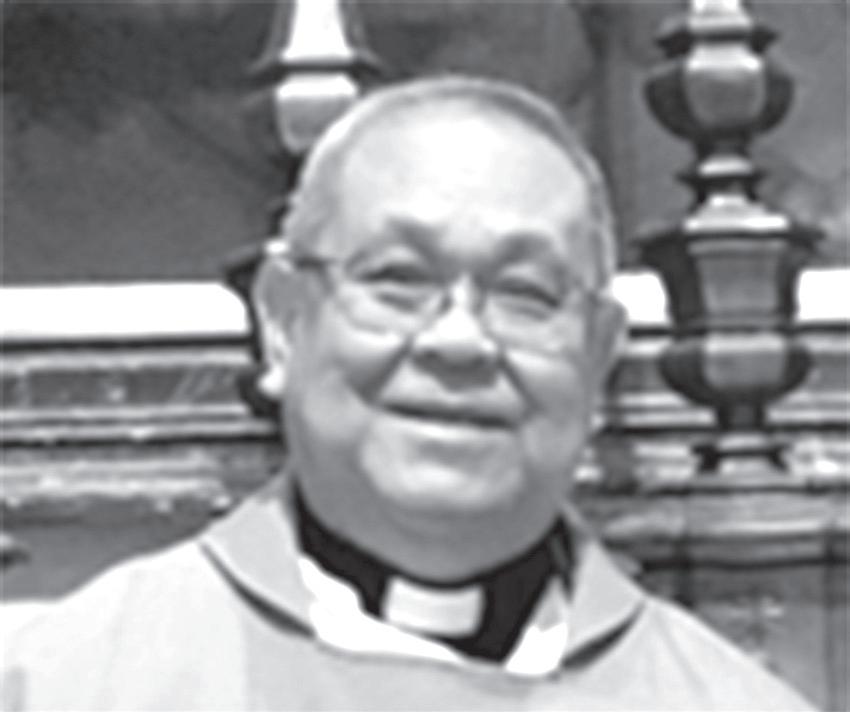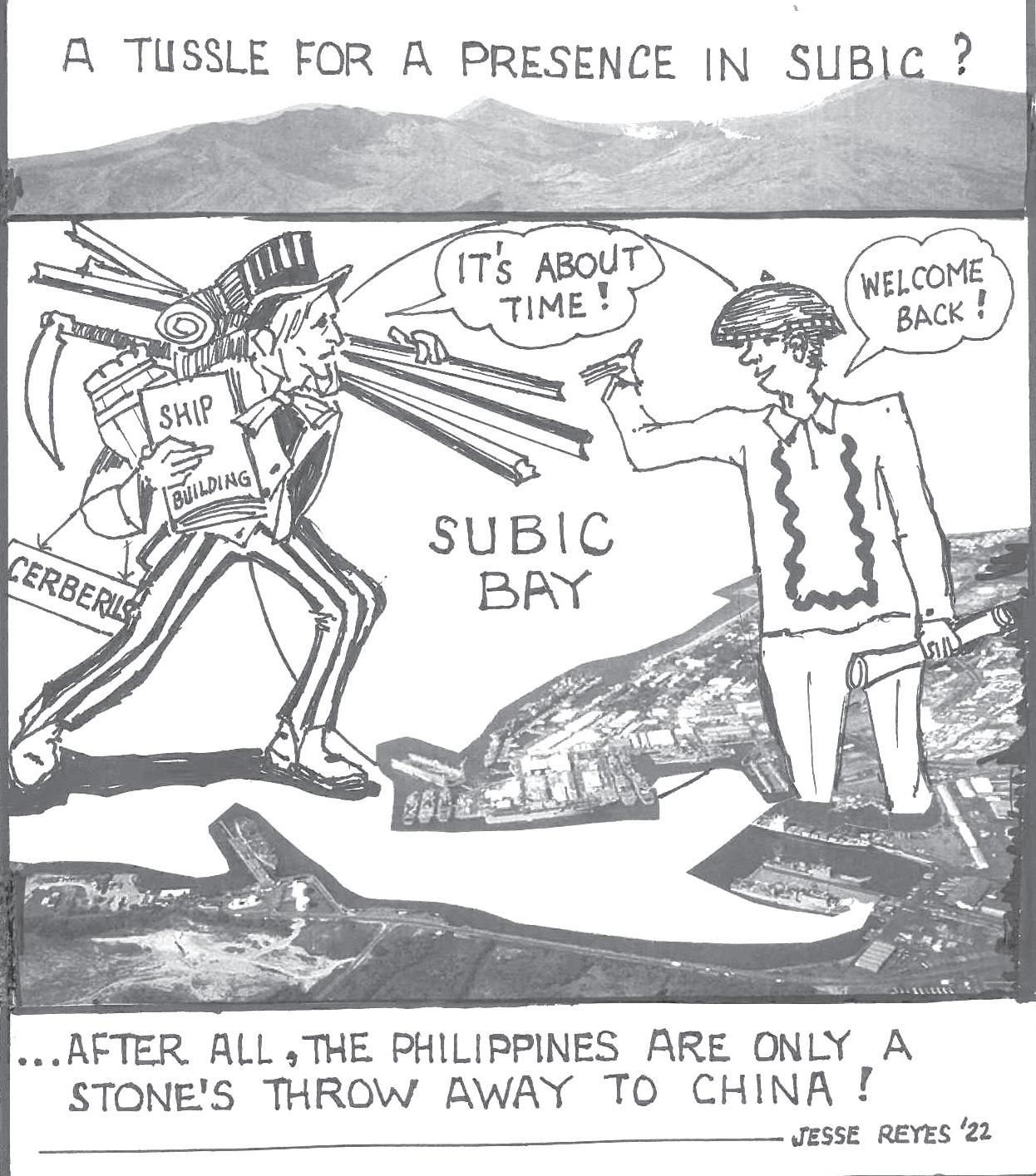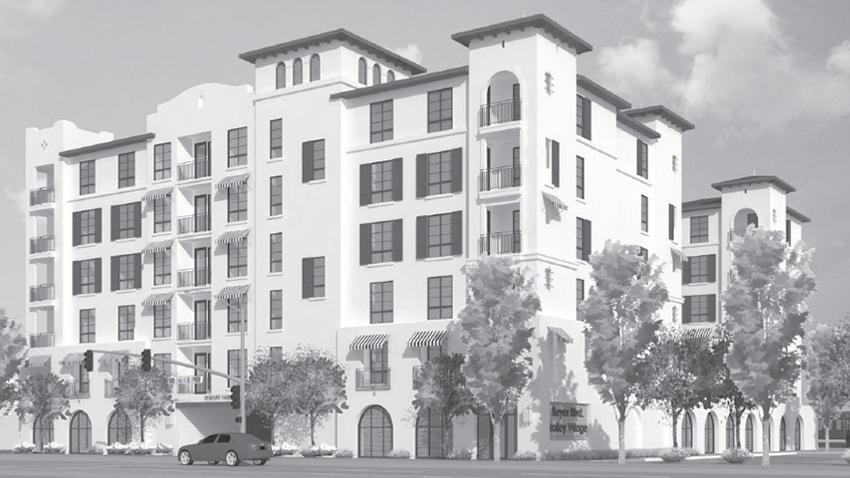


MANILA, -- The adoption of the 10-point policy agenda for the country’s economic recovery is not an “exit plan” solely from the coronavirus disease 2019 (Covid-19) pandemic, Malacañang said Thursday.
In a press statement, acting Presidential Spokesperson and Communications Secretary Martin Andanar said the policy agenda is part of the preparations for the shift to the “new normal”.
“We do not share the view that this is the current Administration's exit plan, for this forms part of the country's preparation to build resilience under the New Normal,” Andanar said.
Andanar issued the clarification after President Rodrigo Duterte on Monday signed Executive Order (EO) 166 directing all government departments and offices to adopt the 10-point policy agenda to hasten the recovery of the Philippine economy from the impact of the prevailing Covid-19 pandemic.
Under EO 166, all state departments, bureaus, offices, agencies, and instrumentalities, including government-owned or -controlled corporations and state universities and colleges, are mandated to ensure that all related policies, measures, and programs

are aligned with the adopted policy agenda. Andanar expressed optimism that EO 166 would also be implemented by the succeeding
administrations.
This, as he likened the new EO to the current administration’s adoption of EO 168 which was signed by former president
Benigno Aquino III in 2014 to create the Inter-Agency Task Force for the Management of Emerging Infectious Diseases in the Philippines.
“Unless Executive Order No.166 is modified or revoked, it would remain effective and operational,” Andanar said. EO 166 aims to sustain current

CORONADO, CA --
The 100th Annual Coronado Flower Show, a co-production of the Coronado Floral Association (CFA) and City of Coronado, and supported by the County of San Diego, will make its return April 23-24, 2022 to the iconic Spreckels Park in Coronado. Event organizers are thrilled to bring together again anthophiles (people who love flowers!), as well as plant-curious community members from around San Diego County to commemorate this major milestone, despite a two-year hiatus during the pandemic.
“As we approach our celebration to recognize our 100th anniversary, we grow more excited each day to once again bring our community together to experience the sights and scents of beautiful floral design, appreciate the carefully curated home fronts and witness the joyful moment when show exhibitors
are recognized for their artistry,” says Diana Drummey, 2022 Chair, Coronado Flower Show. “We look forward to celebrating our centennial with the City of Coronado neighbors and our wider community of friends and longtime supporters. In addition, we acknowledge a new generation of gardening and floral design enthusiasts that will take us into the next 100 years.” What to expect at this year’s show During the pandemic, many new habits and hobbies were discovered by homebodies. One obsession that social distancing inspired was a newfound love for plants and gardening. According to a recent study, 88 percent of respondents who began a plant-keeping hobby during the pandemic said it had a positive impact on their mental health. For three years, new gardeners have blossomed everywhere, creating a new passion and appreciation
for the world of horticulture and plant care. Coronado Flower Show organizers encourage these new plant enthusiasts to attend the event to not only build their skills, but also meet and learn from seasoned gardening aficionados.
Known as the “longest running tradition in Coronado,” the Coronado Flower Show offers its attendees beautiful landscape displays and a variety of floral competitions with a mission to educate the public. The show is organized using the National Garden Clubs, Inc. flower show rules. Over the two-day event, more than 4,000 attendees will gather in Spreckels Park in the center of Coronado. Visitors will enjoy live bandstand entertainment, delicious food, a beer & wine garden, as well as shopping featuring several local artists and small businesses.
In addition, before the event from April 8-10 there will be a “Home Front Judging” event to recognize and appreciate exceptional home and business gardens throughout the city. During the three-day event, over 150 local community volunteers will show up to walk the beautiful streets of Coronado to appreciate the meticulously curated gardens, home fronts, store fronts, apartment buildings, condominium complexes, churches, and school gardens. The volunteers’ results of the “Home Front Judging” event are due by April 11 and ribbon winners will be announced prior to the Coronado Flower Show weekend.
“I’ve participated in the Coronado Flower Show for over 30 years and am excited to once again take part in this year’s event,” says Carvill Veech,
By Chaplain Don Bia Dog with Dan De guzmanSAN
DIEGO, CA --April 2022 is a special month of commemoration. A team of willing volunteers put together the 80th Anniversary of Bataan Death March, Saturday April 9, 2022, 11001200. The VFW Post 7907, Post 7907 Auxiliary, and the 80th Anniversary of Bataan Death March Committee are hosting the luncheon following the remembrance day event. The City of Poway, Veterans Park of Poway Committee, civic and military leaders, and many other individuals and organizations supported the historical event which will be held at the Old Town Poway. We are so grateful to Godfor all the untiring support of our community.
In retrospect, the Imperial Army of Japan launched a surprise attack on the Philippines, a U.S. Commonwealth, on December 8, 1941, just 10 hours after the Japanese sneak and surprise attack U.S. Navy Pacific Fleet, along with all other U.S. military bases and installations at Pearl Harbor and Wheeler Field. Japanese Imperial forces invaded the Philippines in a sneak attack on military installations in Luzon, 10 hours after Pearl Harbor in Hawaii. Initial aerial bombardment was followed by landings of Japanese Imperial ground troops both north and south of Manila in the Philippines. The Commander-in-Chief all U.S. and Filipino U.S. Commonwealth forces in the Philippines, General Douglas MacArthur, consolidated all of his Luzon-based units on the Bataan Peninsula to fight against the Japanese Imperial army. By this time, the Japanese controlled nearlyall of Southeast Asia. The Bataan Peninsula

and the island of Corregidor were the only remaining Allied strongholds in the region.
On a historical note, the Philippine U.S. Commonwealth Army was created by Philippine Commonwealth Act Number 1, approved December 21, 1935. On July 26, 1941, a new command in the Far East was created, known as the United States Army Forces Far East (USAFFE). On the same date, President of the United States Franklin D. Roosevelt, issued Presidential Order (6 Federal Register 3825) which called the Philippine U.S. Commonwealth Army into the service of the Armed Forces of the United States.
During the Battle of Bataan, despite their severe shortage and lack of supplies, American and Filipino forces managed to fight the Japanese Imperial Army for three months and two days (January 7 – April 9, 1942) engaging them initially in a fighting retreat southward. They were hoping for the “promised supplies” of armaments and


economic gains, minimize the Covid-19 pandemic’s long-term adverse effects, and restore the country’s development trajectory.
It orders the government offices to strengthen healthcare capacity; accelerate and expand the vaccination program; further reopen the economy and expand public transport capacity; resume face-to-face learning; reduce restrictions on domestic travel and standardize local government units’ requirements; and relax requirements for international travel.
It also mandates the national government to accelerate digital transformation through legislative measures; provide for enhanced and flexible emergency measures through legislation; shift the focus of decisionmaking and government reporting to more useful and empowering metrics; and undertake mediumterm preparation for pandemic resilience.
The Department of Health has classified all areas in the country as low risk for Covid-19.
From March 14 to 20, the country has reported around 3,572 new coronavirus infections. Unfinished gov’t projects
foods would arrive, so they fought valiantly knowing that promise. Nevertheless, the logistical and additional troops support never arrived.
They prayed to God and cried saying, “No Mama, No Papa, No Uncle Sam.” The combined American and Filipino forces made a last stand. The delay tactics worked and cost the Japanese valuable time and prevented immediate victory across the Pacific. With no hope of reinforcement of forces and supplies and the mounting casualties caused by injuries, famine, and diseases, the 78,000-80,000 American and Filipino warriors finally surrendered on Thursday April 9, 1942, to the Japanese in Bataan, Philippines. It was known as the “Fall of Bataan.” Following their surrender, tens of thousands of U.S. and Filipino warriors were forced to become Prisoners of War (POW) to the Japanese. The American and Filipino service members faced horrifying atrocities, conditions, and treatment as POWs. They reluctantly surrendered on Holy Thursday April 9, 1942. The Holy Week turned into unholy horrors. April is the hottest and driest time of the year in the Philippines. The infamous walk was dubbed as the “Bataan Death March,” the forcible transfer by the Imperial Japanese Army of American and Filipino Prisoners of War. It was a notorious trek by the Soldiers, Sailors, and Marines started from Saysain Point, Bagac, Bataan and Mariveles to Camp O'Donnell, Capas, Tarlac, via San Fernando, Pampanga. The starving and sick prisoners were forced to march. Thousands died. The starving and ill-treated Prisoners of War were force-marched 63 miles (101
Our Beloved Pampered Pinay Laid to Rest
Francine Antoinette Maigue, our beloved Pampered Pinay was laid to rest on Wednesday, March 16 at 1pm at Greenwood Memorial Park.











Francine
Maigue,
Francine’s memorable service was attended by family, friends and dignitaries from across the country. Her celebration of life started with two days of viewings.
As you enter the Greenwood Memorial chapel lobby, you are greeted by family surrounded by gorgeous flowers, strength and hope bracelets, pins that had her name and the Lung Cancer ribbon and large photos of Francine with her famous quotes. “You are who you are, wherever you are, and that’s always more than enough.” And “Success is subjective. Happiness is a decision.”
Centered at the front of the chapel amongst a sea of white flowers, Francine in her elegant white casket with white silk bunting and ornamented silver handles, laid beautifully in her scarlet red gown. Lovely photos of Francine from her debut and Miss Philippines adorned with gorgeous flower arrangements were displayed throughout the chapel. The Garden Chapel was filled with Francine’s loved ones sharing stories and exchanging hugs. Connecting with one another just like Francine had connected with each of them during her very successful 41 years of life. Friends and colleagues took turns in telling stories of her life as a young performer, her fruitful teen years as a competitive dancer, her college experience at UCLA, her tremendous work in the community, her true kindness and soulful generosity. Within the crowd you saw Council Members, City Mayors, Assembly Members, successful entrepreneurs, Francine’s Oncologist, Chemotherapy Infusion Team, Radiology Team, the team from The American Lung Association, members from The Filipino Womens Network, Sharp Medical Board Members, San Ysidro Health, her friends and fellow performers from the San Diego Theatre community, old teachers, Francine’s students young and old, the range of mourners was so vast. She touched so many and they came in droves to celebrate her. One of Francine’s talented mentees, Melanie Jimenez sang an emotional rendition of “The Journey.” Her loving godsisters, Krystine and Katherine Sahagun shared a duet called “For Good.” The songs’ lyrics were so fitting of what so many felt Francine meant to them.
“It well may be
That we will never meet again
In this lifetime
So let me say before we part
So much of me Is made of what I learned from you
You'll be with me
Like a handprint on my heart
And now whatever way our stories end
I know you have re-written mine By being my friend” Francine’s Funeral day started with a rosary by Father Angelo from San Jose. Beautifully colored rosaries were given out but not before they were blessed by Fr. Angelo. Followed by a heartfelt welcome by her older sister, Theresa Maigue Bendorf. Theresa was followed by Ruth Sahagun, Francine’s aunt by choice. She quoted scripture that was so poignant. Next was Francine’s best friend from Grad School. Merve Aldatmaz shared stories of their time at Harvard and how Francine traveled to Istanbul to be her Maid of Honor at her wedding. And even though they lived on opposite sides of the country, she was the best aunt to her two little girls. Marily Mondejar, president of the Filipino Womens Network raved about Francine being the face of Global Pinay Power. How her grace, charisma and pure passion for Filipino women empowerment catapulted their initiatives to the forefront. Former Assembly Member Lorena Gonzalez Fletcher was next at the podium. She described Francine, her District Director of eight years as being “The best person!” She was kind, so hard working and ensured that anyone that needed help, got the help they deserved. The speakers closed with Francine’s nieces each taking turns at the mic. Jewel Maigue Bendorf recited Francine’s poem “The Fight” and shared that her Ninang called her Sunshine. Trinity Maigue Bendorf, Francine’s angel, living up to her Ninang’s expectation of also being a poet, wrote and recited a poem she wrote herself entitled “My Family.” She described her family so lovingly. “I’m from “hi besfren” greetings to “11:11 make a wish” messages.
I am from the best family in the world.
I am from the family that was kind enough to share Francine Antoinette
Retreat Pool & Cabanas Opens on March 25
Outdoor Entertainment, Spa Services and Only Poolside Gaming Venue in San Diego
SAN DIEGO, CA -- Sycuan Casino
Maigue with the world.”
Last was Francine’s princess,,Thalia Maigue Bendorf. She vowed to uphold her Ninang’s legacy. “So Ninang, I make this promise to you. your unfinished projects, every poem, every song, every book, every dreams, will not stay only as a fraction of your imagination but instead … will soon become a REALITY.
And although you are already so well known and loved, for those that don’t already … I will make sure that the world will know your name. Your work down here is not done yet, it’ll just be fulfilled by the people you have raised and molded to step up to the plate and be the next generation of world leaders and creatives.
I’m not entirely sure how I can do this without you… but I know that I can because of the compassion, hard work, dedication, respect, and love you instilled in me. I know I can, because you did.
On behalf of all the people you have inspired, the next generation, our Mystic Fam, FilAm Bayanihan, UCLA/Harvard besties, Team LGF, your loyal Pampered Pinay readers, Francine Maigue fans WorldWide, most importantly from your Mama, daddy, Kuya J, Ate, your dude, your angel, your sunshine, and your princess… we love you and we thank you.
I’ll finish what you started. The world will know the Legacy of Francine Maigue.”
The next surprise came when Francine’s sister, Theresa stood at the center aisle holding one white rose. Because Francine and Theresa were known as dancers, some suspected that maybe a tribute performance was to be expected.
But as soon as “The Journey” song by Lea Salonga started to play and Theresa started moving her graceful hula hands, the cameras came out and the tears started to flow. Francine’s nieces joined in during the chorus.
Then more and more of Francine’s friends and dance students united in the most beautiful surprise flash mob like style dance ever. To end, each dancer took turns blowing a kiss to their friend, teacher, mentor, aunt, sister.
Father Angelo then asks Francine’s family to say their final farewell.
A tearful farewell as you would expect as Francine has been taken way too soon. As the family sat back down, Fr. Angelo says a prayer and blesses Francine one last time. He then asks the pallbearers to come up. They consist of her brother in law Jason Bendorf, nephew Jordan Maigue Bendorf, cousin Miguel Maigue Carlos, uncle and close family friend Menard Sahagun, godson Kevin Sahagun and close family friend Nathan Mojica. As the pallbearers start their way with Francine down the aisle, the sounds of Francine’s cousin Lara Maigue’s original song “Let God” echos in the large chapel. They make their way outside where Francine is met by a horsedrawn carriage. The white horse, white carriage, white flowers and white casket was a vision to behold.
As the carriage starts on the pathway through the grounds of Greenwood Memorial Park, Francine’s many mourners follow behind as the beautiful music fills the air. “Let God”, “Pie Jesu”, “Light of the Million Mornings”, “Time to Say Goodbye”, “My Love My Life” and “Tulog Na”are songs heard during the procession.
As the horsedrawn carriage comes closer to the mausoleum, the crowd gathers. As the pallbearers bring Francine into the beautiful marble mausoleum, you can’t help but marvel at the gorgeous stain glass windows that adorn the building.
Alas the queen is at her resting place. Fr. Angelo offers a final prayer then blesses the sarcophagus. The cross that laid atop of the casket is given to Francine’s parents.
After a tearful final goodbye, Francine is ready to be placed in her beautiful marble resting place. Her sister as she did many times before, helped Francine get ready for any event or performance. This wouldn’t be any different, as Theresa lovingly placed the veil on the casket for Francine’s swan song. As her parents placed two white roses atop her casket, the memorial adjourns.
To our beloved Pampered Pinay.
Your place in this world will be forever missed. But rest assured that the legacy you built will live on.
Resort announced that its outdoor pool venue Retreat Pool & Cabanas will officially open on Friday, March 25 for the 2022 pool season. Retreat will be open daily from 9 a.m. to 6 p.m. for hotel guests and a limited number of day passes will be available for purchase online and on-site at the Retreat hostess stand.
Retreat features an expansive pool deck with two pools, a swim-up bar, lazy river, hot tub, daybeds, cabanas, poolside gaming, spa treatments and a full-service Pool Bar & Grill. The Pool Bar & Grill menu features seasonal bites and a full bar serving everything from fresh mojitos, margaritas to champagne-infused cocktails.
Guests can also enjoy other oneof-a-kind amenities including relaxing spa services in a private luxury cabana and the only poolside gaming venue in all of San Diego at Retreat Casino. Retreat Casino offers an indoor outdoor gaming experience with a view, that’s only steps away from the pool.






Philippines remains at ‘very low risk’ for COVID-19 while nearby countries on ‘severe outbreak’
MANILA -- The Philippines has remained under the “very low risk” category for COVID-19 as neighboring countries like Vietnam, Singapore, and Brunei experienced a “severe outbreak” of infections, independent monitoring group OCTA Research said Thursday.
In a tweet, OCTA Research fellow
Dr. Guido David said data as of March 22 showed the Philippines’ average daily attack rate (ADAR) decreased to 0.43 on March 22, with a seven-day average of 478 cases.
ADAR pertains to the incidence showing the average number of new cases in a period per 100,000 people.
Meanwhile, the country’s growth rate in new cases from the previous week as compared to the current week also went down to -15%.
The Department of Health (DOH) announced on Tuesday that all regions in the country remained at “minimal risk” in terms of COVID-19 case classification as the number of infections slowed down.
Despite the improving numbers, OCTA fellow Ranjit Rye said there is a possibility that the infections might increase due to the massive gatherings during campaign sorties.
“Nakikita natin na talagang tatatas ang mga kaso, maraming mahahawan pa rin pero hindi tayo magkakaron ng surge kagaya ng nakikita natin in the past likely because marami nang immunized sa ating bansa o dumadami pa,” he said.
However, South Korea, Vietnam, Hong Kong, Singapore, and Brunei all remained under the “severe” category, with South Korea still recording the highest ADAR in East Asia countries at 778.50.
Malaysia eased from the “severe” category recorded on March 18 to “very high” with an ADAR of 69.22.
Japan and Thailand, meanwhile, also fell under the “very high” category with an ADAR of 33.18 and 35.32, respectively.
Moreover, Laos recorded an ADAR of 17.27 which placed it now under “high” risk for COVID-19, while Indonesia maintained the “moderate” classification with 3.08 ADAR.
Aside from the Philippines, countries like China, Myanmar, Cambodia, Taiwan, and Timor Leste are at “very low” risk for COVID-19, according to OCTA.
Asked if the Philippines would no longer experience the more transmissible Omicron variant surge like in other countries, Rye said, “Mahirap na tayong bumalik do’n sa panahon na ‘yun kasi unanguna, marami nang bakunado lalo na sa National Capital Region (NCR). Pangalawa, maraming nahahawaan na so may natural immunity.”
In mid-February, Health Secretary Francisco Duque III said the country has already crossed past the crisis stage when it comes to the surge caused by the Omicron variant.
In the Philippines, the NCR and 47 other areas were placed under Alert Level 1 from March 16 to March 31.
Under Alert Level 1, intrazonal and interzonal travel is allowed regardless of age and comorbidities. All establishments, persons, or activities, are allowed to operate, work, or be undertaken at full on-site or venue/seating capacity provided it is consistent with minimum public health standards.
The Philippines on Wednesday recorded 407 new COVID-19 cases, bringing the nationwide COVID-19 tally to 3,675,384.
The DOH said a total of 3,572,224
patients recovered from the viral disease, while the number of deaths climbed to 58,563.
Rye then called on the public not to be complacent and take their primary COVID-19 vaccine series and booster shots, on top of continuous observance of minimum public health standards.
As of March 21, DOH reported there were 65.2 million Filipinos now fully vaccinated against COVID-19, while more than 70.4 million individuals received their first dose.
There were also around 11.6 million individuals who are already boosted against the viral disease.
No slowdown in vax drive amid local campaigns -- Palace Malacañang on Thursday assured that there will be no slowdown in the government’s Covid-19 vaccination drive despite the election campaigns for local posts that will kick off on Friday.
Acting presidential spokesperson Martin Andanar said the vaccination drive should not stop to help maintain the continued decline in the number of Covid-19 cases in the country.
“This occasion is likewise a good reminder that there will be no slowing down of our Covid-19 vaccination drive as we remain on track with our goal of having 90 million fullyvaccinated Filipinos before the end of June 2022,” he said in a press statement. To date, over 65.1 million individuals or 72.41 percent of the government’s target population are now fully vaccinated against Covid-19.
Meanwhile, 11.5 million have received their booster shots.
Earlier, the National Vaccination Operations Center (NVOC) said plans are in place to ensure that the Covid-19 vaccination drive would continue as it anticipates that local government units (LGUs) will have less output due to the campaign and election.
NVOC co-leader Dr. Kezia Rosario said involving the private sector would help in getting more people vaccinated.
Andanar, also secretary of the Presidential Communications Operations Office (PCOO), expressed confidence that the public would remain “vigilant” as the local election campaign period begins. He enjoined the public, especially those attending campaign-related events, to observe protective measures to keep Covid-19 infections and restrictions down.
“We, therefore, ask everyone from the candidates to the general public to strictly comply with health and safety protocols and the guidelines set by the Commission on Elections in the conduct of their political activities, including campaign rallies and inperson campaigning,” he added.
In its weekly case bulletin, the Department of Health recorded a total of 3,572 new Covid-19 cases from March 14 to 20, 13 percent lower than the cases reported last week.
This figure brings the nationwide tally to 3,674,694 Covid-19 cases.
Elderly, immunocompromised may benefit from 4th COVID jab
The Department of Science and Technology (DOST) vaccine expert panel recommended a second booster jab for elderly and immunocompromised Filipinos because they need it more, the head of the group said Thursday.
“Of course hindi naman natin ine-expect na magwa-wane yung immunity agad-agad doon sa general healthy population pero yung mga immunocompromised, yung medyo may edad, yung may mga maraming
sakit na especially mga chronic na mga sakit, ay hindi sila masyadong magandang mag-mount ng immune response,” Dr. Nina Gloriani said.
“So for additional protection, dahil nakikitang nagwa-wane na yung immunity, ni-recommend natin na magbigay ng second booster for these people, special population,” she said.
Gloriani explained that those with comorbidities and those with high exposure to COVID-19 will be prioritized for the 4th COVID-19 dose, if it is approved by the government.
“Ang rekomendasyon namin una, yung mga moderately to severely immunocompromised and then yung mga may comorbidities nga, elderly tapos yung may mataas na exposure, na posibleng ma-expose sa COVID na, of course umiikot pa ang COVID ‘no, pwedeng pang may mag-emerge na variants.”
Learners' vax card not required for in-person classes -- DepEd
The Department of Education (DepEd) on Wednesday reiterated that students are not required to have a coronavirus disease 2019 (Covid-19) vaccination card before they are allowed to join the progressive expansion of the limited face-to-face classes in the country.
At a Facebook livestream on Wednesday, DepEd Secretary Leonor Briones, however, clarified that instead of a vaccination card, students will have to bring a written consent from their parents.
“It is not necessary and we don’t want to deprive children of this opportunity, pero (but) the teachers, we prefer them to be fully vaccinated… or undergo the usual tests to make sure our children will not be exposed,” she said.
Briones said they are also in constant coordination with the Department of Health and local government units for any developments on the alert status of different areas in the country.
Moreover, DepEd Assistant Secretary Malcolm Garma stressed that although they are in full support of pediatric vaccination, they do not want to force it to students given the limited supply of vaccines for children.
“We are campaigning of course, but we are not insisting on it,” Garma said.
The DepEd noted that physical distancing, wearing of face masks, and access to proper sanitation play vital roles to ensure a safe learning space amid the transition to the new normal.
Briones urged parents and students to be prepared for the expected global shift in learning methodologies, saying that the progressive expansion of limited face-to-face classes under the new normal will be different from prepandemic.
“The face-to-face that we are implementing is not going to be like the face-to-face that you are used to, where you are with the teacher, where the children move around as they please. The world will be different, much how the world operates including the Philippines will be online, will use a very high level of technology, so our children have to be prepared, not only by face-to-face but also they have to prepare for online, for technology, for the advances in science and technology,” she added.
Meanwhile, 14,396 public and private schools -- that will be home to 2,600,773 learners -- have been nominated for inclusion in the progressive expansion, as of March 22.
Currently, a total of 10,196 (9,994 public; 212 private) schools are already conducting limited face-to-face classes. (MNS)

Governor Newsom Proposes $11 Billion Relief
Package for Californians Facing Higher Gas Prices
SACRAMENTO, CA -- As oil and gas companies continue to rake in record profits, Governor Gavin Newsom unveiled the details of his proposal to deliver $11 billion in relief to Californians facing record-high gas prices.
“We’re taking immediate action to get money directly into the pockets of Californians who are facing higher gas prices as a direct result of Putin’s invasion of Ukraine,” said Governor Newsom. “But this package is also focused on protecting people from volatile gas prices, and advancing clean transportation – providing three months of free public transportation, fasttracking electric vehicle incentives and charging stations, and new funding for local biking and walking projects.”
The Governor’s proposal calls for $9 billion in tax refunds to Californians in the form of $400 direct payments per vehicle, capped at two vehicles. This package also provides $2 billion in broader relief including: $750 million in incentive grants to transit and rail agencies to provide free transit for Californians for 3 months. As a result, roughly 3 million Californians per day who take the bus, subway, or light rail won’t have to pay a fare every
time they ride. Up to $600 million to pause a part of the sales tax rate on diesel for one year.
$523 million to pause the inflationary adjustment to gas and diesel excise tax rates. The package also calls for $500 million in active transportation for projects that promote biking and walking throughout the state.
Additionally, this proposal fast-tracks a $1.75 billion portion of the Governor’s historic $10 billion ZEV package to further reduce the state’s dependence on oil and save Californians money, including the investments in more ZEV passenger vehicles and building more charging infrastructure throughout the state – especially in low-income communities.
The tax refund will take the form of $400 debit cards for registered vehicle owners, and individuals will be eligible to receive up to two payments.
An average California driver spends approximately $300 in gasoline excise tax over a year.
The Newsom administration will meet with the Legislature to negotiate the details of the proposal in the coming days. Once approved through the Legislature, the first payments could begin as soon as July.
Governor Newsom has allocated billions of dollars in direct relief to Californians over the past two years, including $12 billion in direct checks through the Golden State Stimulus, $5.2 billion in rent relief, and $2 billion in utility relief. Since 2019, the Administration and Legislature have added significant expansions of the Earned Income Tax Credit, including expanding the credit to taxpayers with ITINs, expanding the credit to every Californian working full time at minimum wage, and adding the Young Child Tax Credit. Additionally, the Governor’s historic $37.6 billion climate package provides the resources needed to forge an oil-free future and bolster the state’s clean energy economy.
The proposal provides up to two $400 rebates per vehicle, for owners to support families with more than one vehicle in use. Eligibility will be based on vehicle registration, not tax records, in order to include seniors who receive Social Security Disability income and low-income non-tax filers. The Governor’s proposal does not have an income cap in order to include all Californians who are facing higher prices due to the cost of oil.


STRATEGIC PURCHASE: U.S. FIRM MOVES TO BUY MASSIVE SHIPYARD NEAR THE FORMER SUBIC NAVAL BASE
SAN DIEGO, CA –Mabuhay!
Until its closure in 1992, the Subic Naval Base was the largest U.S. overseas center in the world at 678 square kilometers – about the same size as Singapore – when it still existed.
But now, it seems the Americans are set to return to Subic Bay as U.S. private equity firm Cerberus moved to acquire the debt-laden Hanjin Subic Shipyard, whose parent company is South Korea’s Hanjin Heavy Industries and Construction.
According to Reuters, Hanjin Subic Shipyard owes at least five Philippine lenders $412 million. In 2019, it defaulted on loans worth $1.3 billion.
Observers are calling Cerberus’s $300-million acquisition of Hanjin Subic Shipyard as a “strategic purchase.”
“The U.S. equity firm’s $300-million purchase of the well thought out shipyard could herald a restored U.S. naval presence in its ex-colony,” wrote Gabriel Honrada for Asia Times. Sources revealed the Philippine Navy also plans to lease 300 hectares from Cerberus for its own naval base.
Ever since the Spanish occupation of the Philippines, Subic Bay was considered highly strategic, owning to its deep harbor and its access to the South China Sea. Like Manila Bay, its entrance is protected: Grande Island is to Subic Bay what Corregidor is to Manila Bay – an unsinkable fort.
According to Reuters, at least eight foreign firms expressed interest in acquiring the Subic shipyard in 2019. These included two unnamed Chinese corporations and Australianbased global ship building company Austal. Next month, a deal is set to be finalized on April 15, 2022.
But the U.S.’s move to establish a presence in Subic could also be a counter to China’s proposal to develop two strategic islands within the entrance of Subic Bay.
In August 2019, China’s Sanya CEDF Sino-Philippine Investment
Corp. proposed to expand Grande Island and Chiquita Island, which are located at the mouth of Subic Bay and has a distance of three kilometers from the Hanjin Shipyard. At the time, the proposal was rejected by the Subic Bay Metropolitan Authority or SBMA because it allegedly violates the Philippine Constitution.
At the time, SBMA Chairman Wilma Eisma spurned the Chinese plan because it would entail building up to 80 high-end housing units on the water surrounding the islands.
Hanjin Subic Shipyard was completed in 2009 during the administration of former President Gloria Macapagal-Arroyo. It became one of the largest shipyards in the Asia Pacific region. In 2015, the Philippines were recognized as one of the world’s top 10 shipbuilders because of Hanjin. At the height of its operations, the dockyard employed around 35,000 workers and built 123 large cargo container vessels, bulk carriers and transporters for crude oil, liquefied petroleum gas and mineral ore.
Now, allow me to digress a bit and provide you all – my dear folks – a brief history of Subic Bay: No doubt about it that referring to “Subic Bay” can be confusing. There are several places in Zambales Province, Philippines that share the name. Subic Bay is a large basin located on the Western coast of Luzon, the northern island of the Philippine archipelago. Located northwest of Manila, Subic is smaller than Manila Bay and never saw the level of shipping traffic as in Manila. Subic is also a town north of Subic Bay. Subic Bay was also the name of the former U.S. Naval Reservation located along the shore of the cove. When I use “Subic” and “Subic Bay” I mean the then naval enclave which included the air station, the naval station, and other command units within the overall complex. The U.S. Naval Base, Subic Bay was an approximately 262 square mile naval area located on the Southeastern point of the province of Zambales in the Philippines.

was a town of 60,000 people that continued to grow in the following decades. Olongapo was legally a part of the U.S. naval station after World War II and remained under American jurisdiction until 1959. After Olongapo obtained its autonomy from the United States its culture, economics, and politics stood connected with Subic Bay’s growth. The sounds of American sailors, civilians, and military infrastructures defined the histories of Subic Bay and Olongapo City.
It has been thirty years on since the Philippine Senate vote that brought the curtain down on the giant U.S. naval base at Subic Bay. As I have indicated above, for much of the twentieth century, the U.S. Naval Station Subic Bay, and its companion U.S. Air Force base at Clark, some 50 kilometers to the north, had been a critical node of America’s military operations in the Pacific. Blessed with abundant deep

Although most of its physical infrastructure sat along the water’s edge, the base’s borders extended inland into the jungle and mountain terrain around the bay. At its largest, the naval reservation encompassed approximately 26,000 water acres and 36,000 land acres. The base also shared a border with Olongapo City, which in the mid-twentieth century

Jesse T. Reyes
Filipino Potpourri

In 1998, less than six years after the closure of Subic, the Philippines and the U.S. signed a Visiting Forces Agreement (VFA), laying out the rules for American personnel deployed in the islands. The VFA also led to the establishment of the “Balikatan” military exercises, which has since been held more than 35 times. In 2014, in the wake of a new round of aggressive Chinese action in the South China Sea, during which it began building Mischief Reef and other Spratly Island features into fortified artificial islands, the VFA was supplemented by an Enhanced Defense Cooperation Agreement EDCA), which permitted the Americans to rotate conventional forces through Filipino military bases. At around the same time, Navy ships started berthing again at Subic.
the way of specifics was publicly disclosed by either side. Yet a readout of the meeting between the two noted that both factions had agreed to undertaken “a number of new initiatives” to ensure the alliance “is postured to address new and emerging challenges.” These included developing a joint vision statement, concluding a Bilateral Strategic Dialogue (BSD) and resuming projects under the Enhanced Defense Cooperation Agreement (EDCA). While these are far from surprising individual initiatives, taken collectively, they hold significance in that they suggest an effort to outline an agenda to modernize the alliance amid new challenges.
water anchorages, and commanding close access onto the strategic South China Sea, it had played in every American military deployment of the century, from the about 1900 Boxer Rebellion in China to Operation Desert Storm (Aug 2, 1990 – Feb 28, 1991) in the Middle East.
But the inevitable conclusion of the Cold War, concerns about the in country behavior of U.S. troops, and the unexpected eruption in June 1991 of Mount Pinatubo, which severely damaged the facilities at both bases, spelled the end for the huge American naval facility.
On September 16, 1991, the Philippine Senate rejected a proposed extension of the basing agreement by a 12-11 vote. The addon had prompted an impassioned debate in which the bases were attacked as symbol of the country’s continued colonial-like dependency on the United States, which had ruled the Philippines as a colony prior to its independence in 1946. After considering putting the bases agreement up to a popular referendum, President Corazon Aquino gave the U.S. until the end of 1992 to vacate the site.
On November 24, 1992, the Stars and Stripes were lowered in a solemn ceremony at Subic Bay, and the Philippine national flag hoisted in their place. The base’s closure ended an American military presence that began with the capture of the Philippines from Spain in 1898. Today, the fateful Senate vote is marked by a monument located in front of the boxy building that once housed the U.S. base headquarters. The memorial features the hand prints of the twelve senators, topped by a Virgin Mary-like figure releasing a bird into the sky. An inscription read, “Let the Dozen Hands pay tribute to the Magnificent Twelve Senators of the Republic of the Philippines, who on September 16, 1991, stood up and declared “No” to the RP-US Military Bases Treaty, thus finally ending more than four centuries of foreign military presence in the country.” Sad to say, the U.S. military absence from the Philippines was to be short lived, if I may say so. In February 1992, the Chinese government promulgated a law asserting its claim over a vast swath of the South China Sea. Two years later, it occupied Mischief Reef, in the eastern part of the disputed Spratly Islands close to the Philippine island of Palawan, in the face of opposition from Manila, and began erecting structures on the coral banks. Facing this rising power to the west, the Philippines turned once again to its treaty ally and former colonial master for support.
The campaign for the removal of the U.S. bases, and the subsequent return of the American military to the Philippines, encapsulates the nation’s complicated relationship with its former colonial master. As the most visible sign of America’s residual presence in the Philippine archipelago, the U.S. military existence continues to be a focus for the periodic eruptions of resentment against American influence. This burst forth in the protests that greeted President Rodrigo Duterte’s decision to pardon an American Marine convicted for the 2015 killing of a Filipino transgender woman at a hotel in the town of Olongapo, which sits adjacent to the former Subic Bay base. At other times, Duterte has himself been harshly critical of past American activities in the Philippine islands.
At the same time, many Subic Bay locals still lament the closure of the U.S. naval base, which once provided employment for tens of thousands and supported a thriving economy. Finally, in 2019, Subic was converted into a somnolent free trade zone.
Last September 2021, the defense chiefs of the United States and the Philippines met in Washington, D.C. in the latest high-level consultation between the two treaty allies since President Joe Biden took office. While the talks were part of a process of ongoing interactions, they also signaled efforts to chart out new agenda items for the U.S.-Philippine alliance that bear watching for both countries and the region more generally in the context of lingering challenges for both sides.
The American-Philippine alliance – enshrined in the 1951 U.S. – Philippine Mutual Defense Treaty and part of a wide range of U.S. engagements with Filipinos and a long history dating back in 1898 – has remained a key piece of U.S. defense arrangement in the AsiaPacific, despite facing its own ups and downs over the decades. The rise of President Duterte had seen an uptick in friction between the two allies, with the Filipino head of state reversing Philippine positions on issues such as the South China Sea, strengthening ties with China and Russia and threatening to nix areas of cooperation, including the Visiting Forces Agreement.
American President Joe Biden’s entry into office presented an opportunity for both sides to recalibrate their relationship, including in the area of defense.
While consultations on this score have been ongoing since the administration took office, signs of renewed optimism entered the public sphere during U.S. Defense Secretary Lloyd Austin’s trip to the Philippines in July of last year, during which both camps agreed to a restoration of the VFA.
The talks took place as part of a series of dialogues between Washington and a visiting Philippine delegation led by Defense Secretary Delfin Lorenzana and Foreign Affairs Secretary Teodoro Locsin, which officials indicated engagements with American agencies including the White House, State Department and Pentagon as well as segments of the think-tank, business, and FilipinoAmerican communities.
Unsurprisingly, not much in
The references to a joint vision statement and a bilateral maritime framework both point to new areas of collaboration within the alliance, even, though, no further specifics were publicly disclosed. If reached, a U.S.-Philippine shared vision statement of some kind would provide an opportunity for both parties to align broadly on priority areas of collaboration, as Washington has done in the past with other Asian allies and partners, such as Thailand, rather than working through narrow issues in a transactional fashion.
A formalized bilateral maritime framework would take into account the shifting dynamics within the alliance and in the region, including Washington’s evolving military presence, China’s maritime posture, and Philippine capabilities, which the Pentagon has already been evaluating as the Biden team shapes its overall approaches to China and the Indo-Pacific, which have also yet to be publicly disclosed.
The references to BSD and EDCA are the two items that signal more continuity but are nonetheless notable for their own sake. The testimonial to the BSD is a nod to a high-level mechanism that situates defense-related issues within the overall alliance in the spirit of comprehensive cooperation in the face of challenges such as the pandemic and climate change –which could be boosted as well with a new “2+2” ministerial conference going to be held next year (a “2+2” meeting was introduced in 2012 but has rarely been held since). The recommendation to resume EDCA activity speaks to both, one of the tangible manifestations of unrealized defense cooperation amid U.S.Philippine alliance tensions under Duterte as well as a potential avenue for advancement in security ties. To be sure, advancing this will not be without its summons. New challenges – whether they are joint vision statements or new infrastructure projects under EDCA – will need to be properly prioritized, resourced, and overseen to ensure progress. And even if advancement is achieved on these specific items, their implementation will also occur amid the management of broader issues within the alliance, which include not just Duterte’s impulses, but also shifting domestic and regional dynamics such as intensifying U.S.-China competition and the upcoming Philippine national elections in May and U.S. midterms in 2022. Unexpected developments could also intervene, not just on issues within the region such as the South China Sea but also with respect to fallout from events such as the disastrous U.S. withdrawal from Afghanistan, which has already intensified terrorism fears in Southeast Asia.
Yet the emerging effort to chart out a U.S.-Philippine defense agenda to address a new, diverse array of challenges is nonetheless worth being attentive to. Even as American policy makers build out new partnerships in the Indo-Pacific region such as those with Vietnam, progress in some of Washington’s older treaty alliances, such as the Philippines, could have further implications not just for both sides, but also for Southeast Asia and the Indo-Pacific region more generally. The Philippines’ Department of





















































